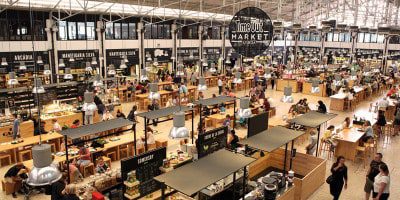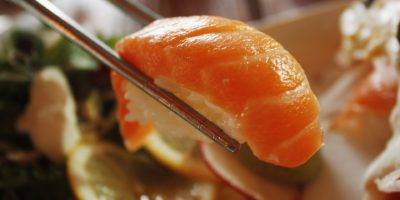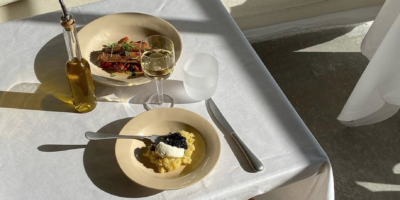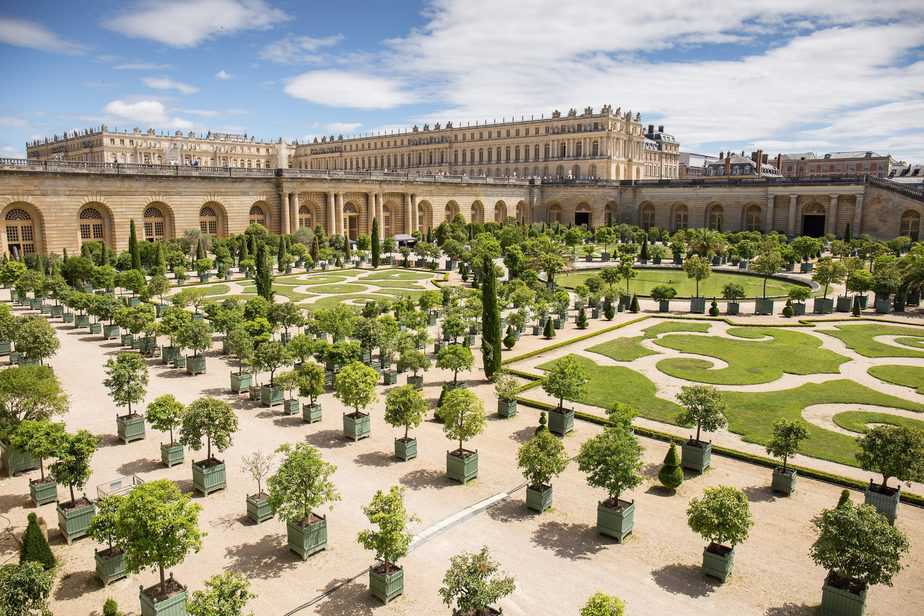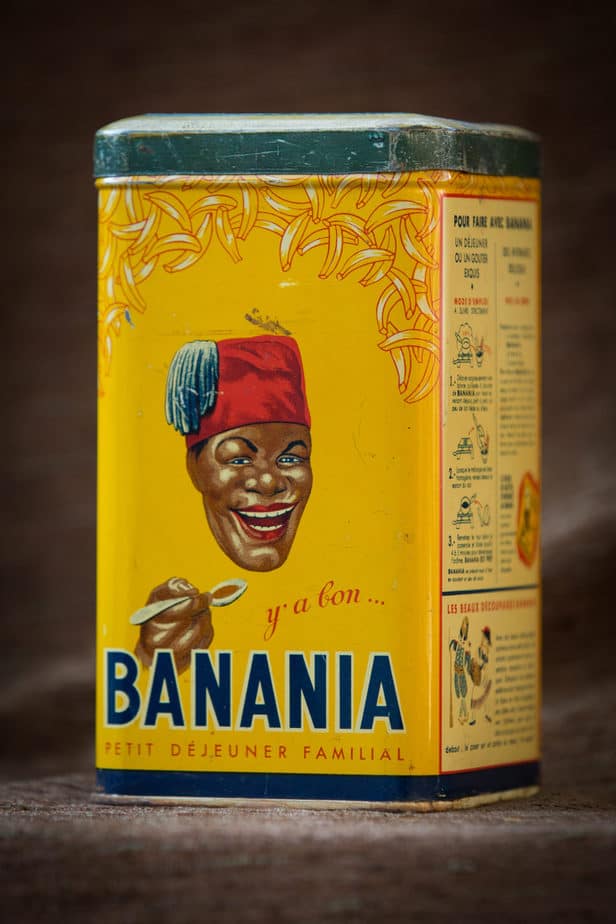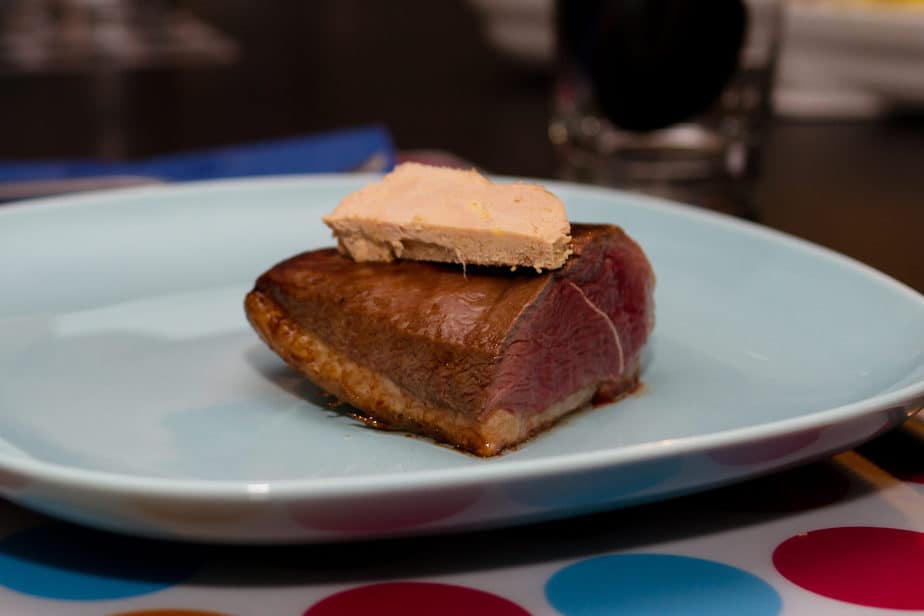A Brief History of French Cuisine
Let’s start by a question: is there a definable French cuisine?
When you see “French specialties” in a Parisian restaurant, it is going to be for tourists with probably few or no French inside.
The French would themselves rather be attracted by regional specialties and considered the restaurants offering them as more authentic than the melting-pot of very various recipes labelled as “French”.
There is a big regional diversity comprised of different terroirs. The specialties from a territory are often protected by labels of the French state and the European Union.
Yet, the French themselves recognizes that French cuisine is a thing even if too diverse to be explained and summed up quickly.
UNESCO agreed and the French cuisine was the first cuisine to be recognized as part of the world patrimony in 2010. The definition included not only the food itself but everything around it: the attention to the products, the services, the social importance of the meals, etc. A way of life or an art de vivre!
Let’s trace here some of the big trends that explain how French cuisine became what it is today.
A very special ancient cuisine
The cuisine of the Antiquity and the Middle Ages have only a few things in common with what it is today.
Some legacies of the Antiquity
We don’t know much about the food of the Gauls who lived in the territory before the Romans. It seems that they ate a lot of meat, at least for the big feasts, and also cereals.
The first versions of beers appeared at this time whereas the Romans introduced the wine that was mixed with water. Until the late XIXth century, it was often safer to drink alcohol than contaminated water.
We keep some legacy from the Roman times such as the pâtés, the boudin (a blood sausage), the foie gras, the truffles. Meals were enjoyed in a lying position.
Eating in the Middle Ages: a socially divided activity
We know much more about what people ate in the late Middle Ages. It was very different according to the social classes and orders.
The nobles had the privilege to be authorized to hunt. This was their main hobby and they were ready to kill the commoners caught poaching. They ate a lot of what they hunted.
The best was the birds: coming from the sky it was considered a noble meat. The vegetables coming from the ground were not as well seen. As a result, the nobles ate too much meat and were often victims of the gout.
The kings and the nobles used a lot of spices to enhance the flavor, some says that it could also hide the poor condition of the food…
Spices were also as a sign of wealthiness. Spices coming from very far could be used as a currency. Still today in France, to pay in cash is said “payer en espèces”, espèces coming from the French for spice, épices.
The poor commoners had to eat food like pigs, salted herrings, roots, or oatmeal porridge. In times of famine they ate whatever they could find. That is the origin of traditions like eating snails and frog legs that seem strange to other countries.
There are some legends about the apparition of some dishes. Take the Roquefort for instance, this cheese made with ewe’s milk and moisture. The story says that a shepherd who was supposed to supervised the milk left to follow a young girl. When he returned days later, he invented the Roquefort with the rotten milk.
On the tables of the kings and the high nobles appeared the French service. A feast could be comprised of around 3 services of 10 plates to give a maximum of diversity to the guests.
Between the services, entertainers and musicians could perform. The nobles had separated plates unlike the commoners who were often eating in the same recipient with their hands. Spoons and knife existed but not the forks, napkins were used to clean one’s hands.
The habit of choking the glasses to make the toast is coming from a will to discourage poisoning. The idea was to spill a part of one’s drink into the drink of the other so that the poison could not be in only one drink.
The first signed collection of recipes is attributed to Guillaume Taillevent, the head cook of the king Charles V (1364-1380). It was called the Viandier.
The Early Modern era: the beginning of French cuisine as we know it
A change coming from the New World
With the discovery of the Americas slowly came new products: tomatoes, corn, peppers, coffee, chocolate, potatoes, turkeys, beans. They were often introduced in France via Spain.
These arrivals are often attributed to the Spanish queens who married French kings: Anne of Austria (from the House of Austria but Spanish) and Maria Teresa.
Some of these products were well received as soon as they were adopted by the court. However, the acceptation of others took some time.
A famous case is the potatoes. It was strongly advocated in the XVIIIth century by the pharmacist Antoine-Augustin Parmentier who saw it as a remedy to famine. But the French were not very receptive as they did not know what to do with this root and because of the rumors it was a poison.
Parmentier invited personalities like Benjamin Franklin to try it or offer bouquets of potato flower to Louis XVI and Marie-Antoinette.

Newspaper illustration representing Parmentier offering potato flower to Louis XVI and Marie-Antoinette. Sourced from Wikipedia
In another smart initiative, he positioned soldiers around his field of potatoes in the suburbs of Paris. By suggesting these potatoes were very valuable, he attracted the interest of the Parisians.
The sophisticated cuisine of the nobles
The French aristocracy became famous for its refinement. The delicacy of the meals was an issue of prestige between the nobles who had talented head cooks.
The most famous was François Vatel (1631-1671). Head cook of a prestigious noble nicknamed the Grand Condé, he had to organize the feast for the reception of the sun-king Louis XIV. But the fish he had ordered arrived too late. Dishonored, he committed suicide.
The delicacy of the French cuisine was the most visible in the desserts. Tarts, almond paste, jams, pastry puffs, macarons, sugared almonds started to develop. The fruits were also very popular, especially the pears.
Most of the desserts that were created still exist today and are important in French culture. For unclear reasons, the richness of this food does not prevent the French to be among the slimmest in Europe and to have a relatively low rate of heart disease. This is the unfair French Paradox!
Along with the refinement of the meals came the refinement of the eating habits. A strong etiquette appeared in the tables of the rich and one’s education would be judged by it. Even if the average French of today is more relaxed about it than the nobles of the past, he remains more formal about food than many others countries.
Forks appeared in the XVIIth century, coming from Italy. The nobles started to use beautifully decorated ceramics plates and recipients.
The French cuisine was open to foreign influences as the royal courts were cosmopolitan. The habit of drinking tea with sugar like the English developed while the famous Croissant was imported from Austria.
The Portuguese brought soft oranges from Asia that became a sign of wealthiness: the garden of the palaces would often contain an orangery to protect orange trees during winter.
The food eaten by the commoners started to be a poorer version of the one eaten by the nobles and not a completely different diet as it was in the Middle Ages.
This cuisine driven by the habits of the nobles changed with the Revolution of 1789-1799. Many nobles left or were killed and some of the head cooks opened restaurants in the cities. The food habits of the nobles spread furthermore in the bourgeoisie, the new ruling class.
The rapidly changing contemporary cuisine
The impact of the Industrial Revolution
A big change of the second-half of the nineteenth century is the industrialization. Refrigeration, mass production changed the consuming habits.
Some dishes were transformed: chocolate used to be a drink used for medicinal purpose. The French started to eat it for pleasure and predominantly in chocolate bars or used the powder to make their hot chocolate.
One of the main French scientific invention, the pasteurization, was ironically not applied to French cheese. This preference for the best taste over hygiene concerns shows the importance of food in French culture.
Many dishes are so embedded in the French culture that they are wrongly assumed to be very old. This is the case of the baguette.
All kind of theories circulate about its invention and no one is proved. Was it made to be carried easily by the soldiers of Napoleon? Or because it was quicker to make for the bakers who were forbid to work before 4 am?
On the side of the gastronomic cuisine, Auguste Escoffier, chef in the Ritz Hotel of Paris and the Carlton of Cannes codified the French cuisine in the beginning of the twentieth century. The conceptions he formulated, the changes he integrated became a world standard.
The integration and valorisation of local traditions in the national cuisine
With the rural exodus, many inhabitants of the countryside came to the Parisian region, bringing their regional specialties. As they were tried and were appreciated in the restaurants, they opened and became known at the national level. Tourism at the national level increased this enrichment.
The southwest is known for duck’s specialties like the magret and the foie gras; Bretagne for the galette (a buckwheat crepe served as a main meal) and the apple cider; Savoie for the raclette and the fondue, Alsace for sauerkraut and flammenkuche etc.
Most of the times these specialties were not fused in a national tradition but remained associated to their territory of origin. They are a source of pride, one of the main components of regional identities.
The French attachment to the origin of the product is the most visible with wine and cheese. Many French are educated from an early age about the different terroirs of cheese and wine.
Many good wines are known by the French from the little village where they come from. It confuses many foreigners who just want to try a good French wine and don’t know about these terroirs.
The emergence of new trends
From the 70s, the French cuisine underwent some radical changes. In 1973 the gastronomic critics Gault and Millau invented the “Nouvelle Cuisine”.
Lighter dishes with a sophisticated presentation became the norm in pricy restaurants even though this habit did not spread much to the average restaurants.
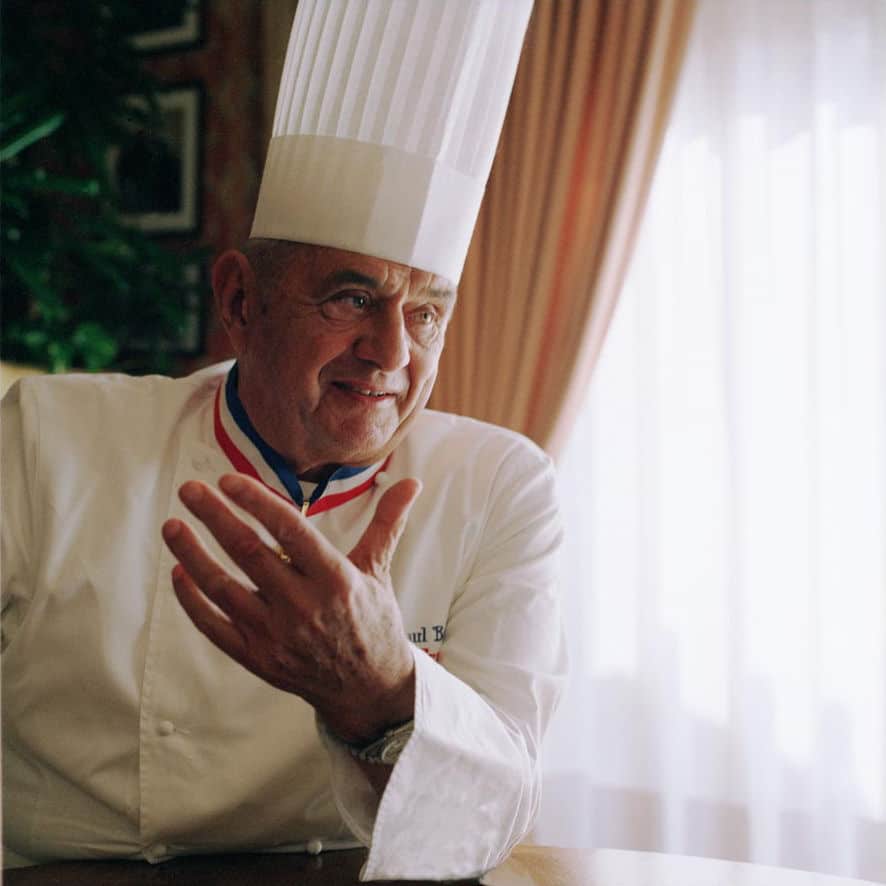
Paul Bocuse famous chef and precursor of the Nouvelle Cuisine. Pictured by Alain Elorza, sourced from Wikipedia
Like the rest of the world, the French became more and more attracted by the fast-foods and are reducing the amount of time they spend cooking and eating.
Polls have revealed that the three most common meals eaten by the French are now pizzas, sandwiches and pastas. None of them are French specialties.
But on the other hands, as a reaction to these trends, the opposite trends are also visible.
More and more French turned towards organic food. Many people try to give the preference to small rural exploitation over the big one. Cooking tv-show and cooking lessons are working very well.
Vegetarianism and veganism are progressing among the population, especially in the big cities. Gastronomic French cuisine is a bit late to adapt to this new market since most French recipes are organized around a piece of meat or a fish.
The evolution of French cuisine will be determined by the reaction of both the chefs and the public to the progress of world food and to the new ethical concerns. If you want to read more about the history of French cuisine, take a look at our article How the Wars changed French Cuisine.
Planning a trip to Paris ? Get ready !
These are Amazon’s best-selling travel products that you may need for coming to Paris.
Bookstore
- The best travel book : Rick Steves – Paris 2023 – Learn more here
- Fodor’s Paris 2024 – Learn more here
Travel Gear
- Venture Pal Lightweight Backpack – Learn more here
- Samsonite Winfield 2 28″ Luggage – Learn more here
- Swig Savvy’s Stainless Steel Insulated Water Bottle – Learn more here
Check Amazon’s best-seller list for the most popular travel accessories. We sometimes read this list just to find out what new travel products people are buying.

 English
English
